When it comes to learning about an ancient civilization’s culture and way of life, one of the most fascinating routes is to look into the weapons and armor the civilization used in battle. Interestingly enough, not too many people know what the ancient Egyptians brought to battle. They’re so well-known for their technological achievements and overall innovation that war-making and battle tactics are relatively low on the list. It’s quite the achievement, when you consider how many ancient civilizations are characterized by their battle gear.
That said, there’s a reason why the Pharaoh’s army was so feared in its prime. Learning all about the weapons and armor used in battle by the Egyptians will help you better learn and understand why they were such a force to be reckoned with. Here are the top ancient Egyptian weapons and armor used in battle.
Javelin (Hand-to-Hand and Thrown)
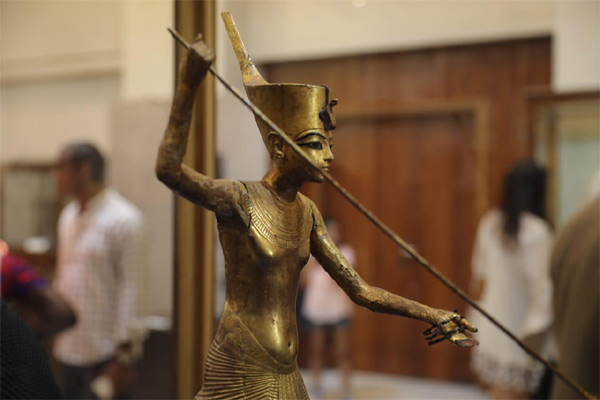
The ancient Egyptians were well-known as a force to be reckoned with due to their habit of innovation no matter the field. When it came to battle, many Egyptians used the javelin to even the playing field. The javelin was a spear about a meter long, which could also act as a missile weapon that could be thrown by skilled soldiers. A well-thrown javelin can penetrate armor, making it extremely useful in the field of battle.
That said, the Egyptians didn’t use the javelin as a disposable ordinance like the arrow. They were much more deliberate with their chosen targets, as the javelin was a much more valuable weapon on the field. Needless to say, any other civilization that faced the Pharaoh’s army would find it challenging to handle such a useful weapon, as it could be used hand-to-hand and hurled forward.
Bronze Tipped Spear
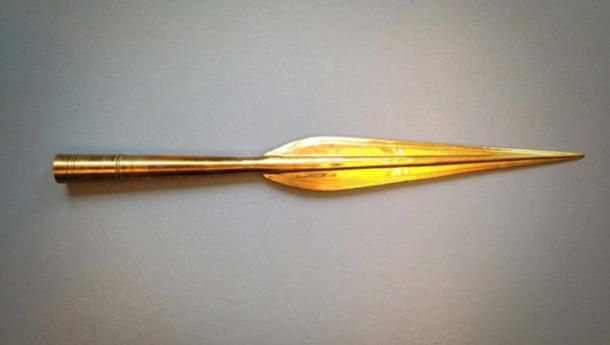
In most cases, the javelin was enough of a weapon to get combatants to think twice. However, the javelin was used more of a secondary weapon to the bronze tipped spear. The regular soldiers in the Pharaoh’s army consisted of spearmen with large, imposing bronze tipped spears. Most of the armor at the time was leather, which meant the spear could reliably punch through the armor, especially in the hands of a skilled warrior.
One of the reasons why spears saw so much use was that they were quite inexpensive to make. It was something the ancient Egyptians could use to arm all of their soldiers, making it one of the most popular weapons at the time. Unlike the javelin, these spears were much too large to be thrown. In most cases, the spears were paired with a shield.
Ancient Egyptian Shields
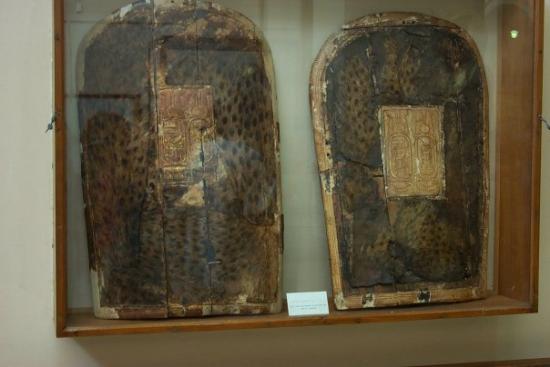
Most ground units had javelins to hurl forward and use as a hand-to-hand weapon, while also equipped with a bronze tipped spear as their primary weapons. As a complement to the spear, the Egyptians were also equipped with a highly durable shield. The shields of the time used animal hide to reinforce the armor, making the shield light enough for most infantry to use without trouble, while still durable enough to take hits.
The Egyptian shield on its own wasn’t anything special, as it was just a means to deflect attacks while the soldiers used their spears to strike down the enemy. When paired with the bronze tipped spear, the Egyptian shield got the job done. The fact that it was so easy to produce meant most of the Pharaoh’s army was protected by these shields.
Khopesh

Aside from the javelin as a secondary weapon, the ancient Egyptians employed the use of battle axes to help strip enemy warriors of their shields. Eventually, the Egyptians modified the battle axe into the much more iconic khopesh, which was a curved sword. Typically, these secondary weapons were used to finish the job, as most warriors fought first with their spears before eventually resorting to the axe or the khopesh.
However, that didn’t stop the khopesh from gathering a reputation for being a weapon of destruction. Skilled warriors made excellent use of the khopesh, outmaneuvering their opponents and striking them down with the curved weapon. There’s a sense of elegance to the khopesh, which was probably why it was so feared. Aside from that, the khopesh wasn’t much different from a regular sword or axe.
The Egyptian Composite Bow
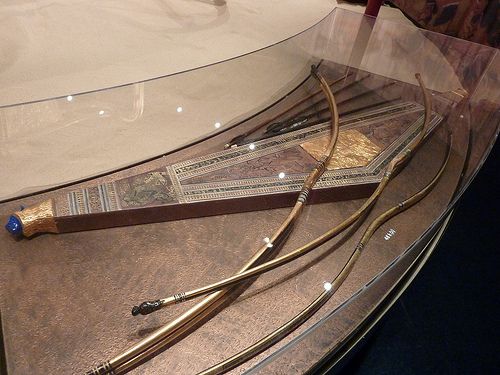
For most history buffs out there, the composite bow is usually attributed to the Mongolians due to how they used it as a superweapon to conquer their enemies. However, not many know that the composite bow mostly got its start in ancient Egypt, and was used to similar effect by skilled archers. The great thing about the composite bow is how it does not necessarily need brute strength to let loose devastatingly accurate arrows. Archers don’t need to rely on strength as much as they would on reflexes, giving Egyptians an edge on the battlefield.
The Pharaoh’s army would have lines of archers armed with the composite bow, letting loose arrow after arrow without having to put too much effort. It was such a destructive weapon that the composite bow came to be feared much like the khopesh. However, the former was undoubtedly more effective in battle.
The Chariot

Ancient Egypt was a land of technical innovation, and the country’s war chariots proved just how devastating it was when technology and battlefield prowess mixed together. The Egyptians treated the chariot as a moving weapons platform, which meant skilled archers could pick off opponents from a moving chariot—and the bow wouldn’t be the only weapon they possess.
The chariot grew in significance and overall strength through the Egyptian dynasties, starting out as relatively light platforms when horses couldn’t be used as cavalry, into devastating weapons platforms that dominated battlefields. The chariot is perhaps the most iconic part of the Pharaoh’s army. It’s easy to understand how terrifying it must have been from the perspective of the enemy to come across the chariot.
Scale Armor

When it comes to the topic of armor, not too many Egyptian warriors used armor in a traditional sense. They favored agility over protection, which was why so many of them used relatively light shields with light leather armor in battle. However, there were some situations where heavier armor wins out. For example, chariot riders don’t need to move around on their own so much, so long as they were on the chariot.
Scale armor was used only by the most elite units, chariot riders included. It turned the chariot into a heavy weapons platform where the rider was much more protected than usual. Such is the reason why chariots were so feared on the battlefield.
The Short Sword

While ancient Egypt was well-known for its many innovations and technological leaps, there were some weapons and armor that saw plenty of use due to its practicality rather than anything novel. For example, the short sword is something just about everyone knows. It’s a weapon that’s only slightly larger than daggers, and was used as a secondary weapon whenever the spears broke.
In the case of ancient Egypt, the short sword also saw plenty of use on the battlefield. It’s challenging for any other weapon to outperform the simple utility of the short sword, as it’s a great weapon to have as a last stand if the soldier loses everything else. It also works fantastically well with a shield.
The Mace-Axe

The khopesh was incredibly popular as a weapon that you could only really find in ancient Egypt. It’s one of the most iconic weapons of the Egyptians, though there is a weapon that comes close in terms of novelty. The Egyptian mace-axe is a mix between the mace and an axe, creating a unique weapon that can potentially shift the tide of a battle.
The mace is a heavy weapon that’s meant to bludgeon, and the axe is meant as a slashing weapon that can potentially disarm shields. What you get in combination is an axe with a scary amount of weight in each blow. The mace-axe—similar to the khopesh—is distinctly Egyptian.
The Egyptian Dagger
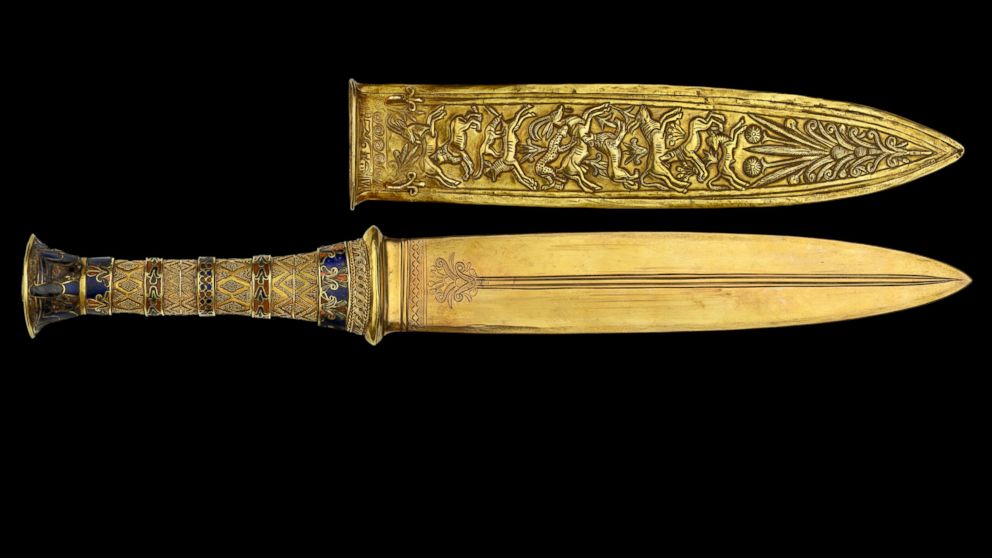
Did you know that the ancient dagger found in King Tut’s tomb was made from a meteorite? That’s what the researchers say, and it’s a revelation—showcasing the height of Egyptian engineering to be able to fashion such a beautiful dagger out of pieces of meteorite. That said, just like the short sword, daggers saw plenty of use in Egyptian war-making. While not quite as common as the short sword in battle, the Egyptian dagger was often beautifully elaborate.
It could also act as a concealed weapon, and was often used in assassinations. While not necessarily the best weapon to use on the battlefield, it still has quite the distinction for being an extremely practical weapon in ancient Egypt.